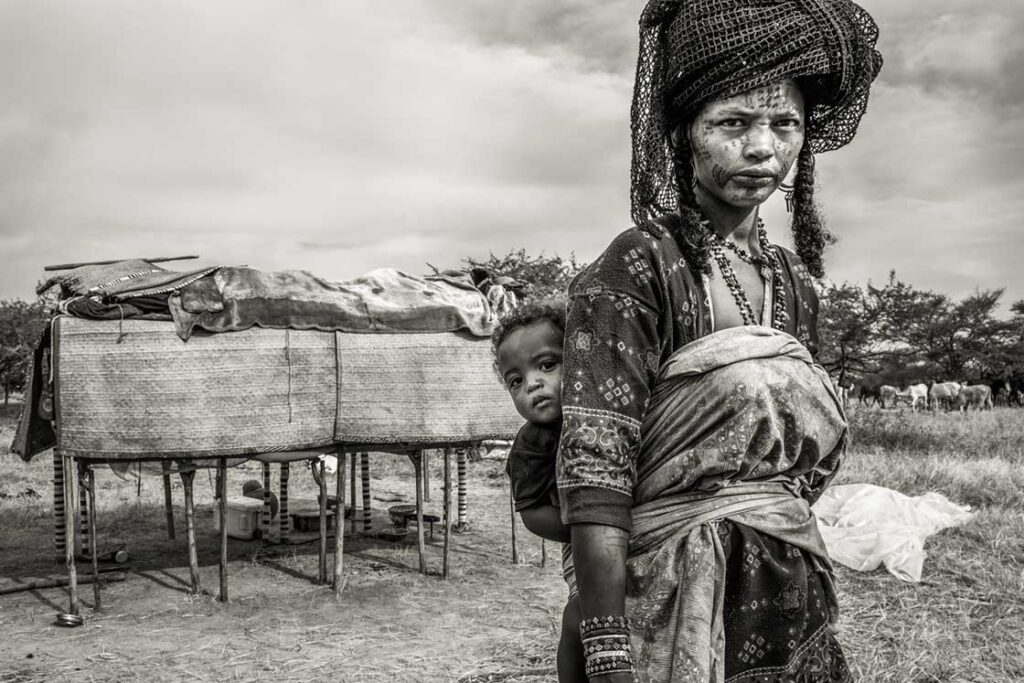France Leclerc | A Wodaabe Gathering!
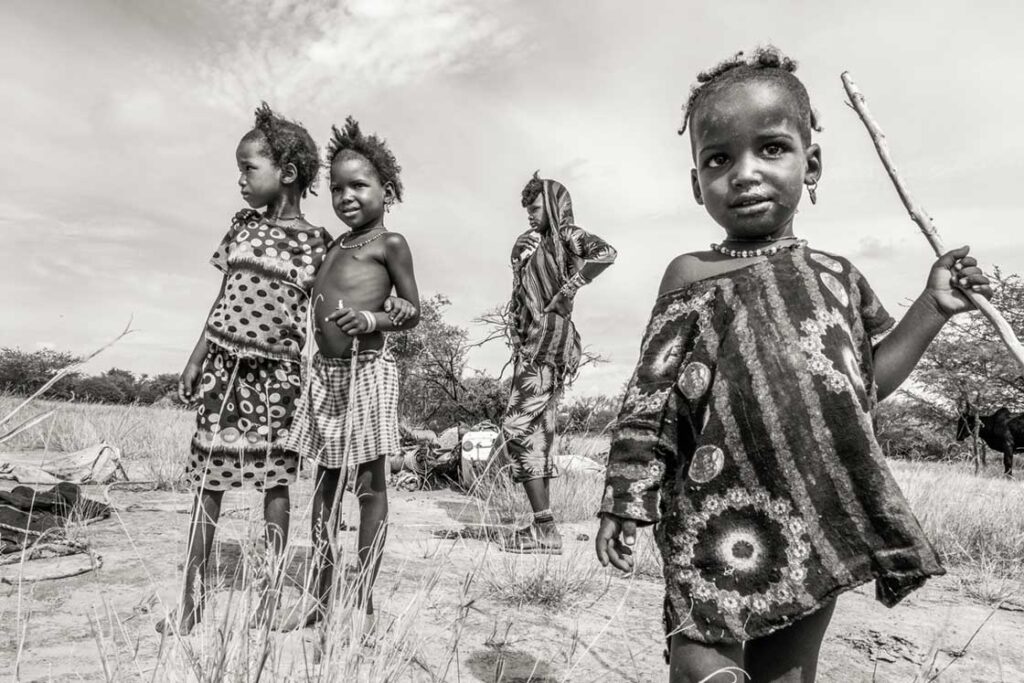
This is a series of images from the Gerewol festival in the Sahel desert in Chad. At this festival, the Wodaabe, a tribe of nomadic cattle herders, meet to celebrate the end of the rainy season and enter a one-of-a-kind beauty contest. Counter to expectations, it is the Wodaabe men rather than the women who are on display. They go to great lengths to beautify themselves and then dance for hours while the Wodaabe women are carefully observing to appreciate their style and skills and pick a winner among them. Furthermore, in some cases, the women use the beauty contest to pick a mate, so a lot is at stake here.
But first, a little about the Wodaabe, a subgroup of the Fulani (also called Peuhl people) and the only remaining fully nomadic tribe of this ethnic group. They live in small clans roaming around all year so that they can feed their cattle. (Sadly, this is a way of life that the Wodaabes may not be able to pursue for much longer as many of their traditional grazing areas are now devoted to agriculture, making it harder for them to find pastures for their cattle).

Though my main purpose was to witness this festival, while I was there, I also tried to capture what daily life is like for a Wodaabe, particularly for a woman. It is clear that the nomadic herdsmen are in charge of the beloved cattle and the women are in charge of, well, everything else.
Women must transport everything the family owns: pieces to put together their dwellings, mats, clothes, cooking utensils, children, newborn animals and many large calabashes (and they have to be ready to do so frequently as the search for pastures and water may require them to move as often as every few weeks). Everything that cannot walk on its own goes on the back of a donkey or an ox.
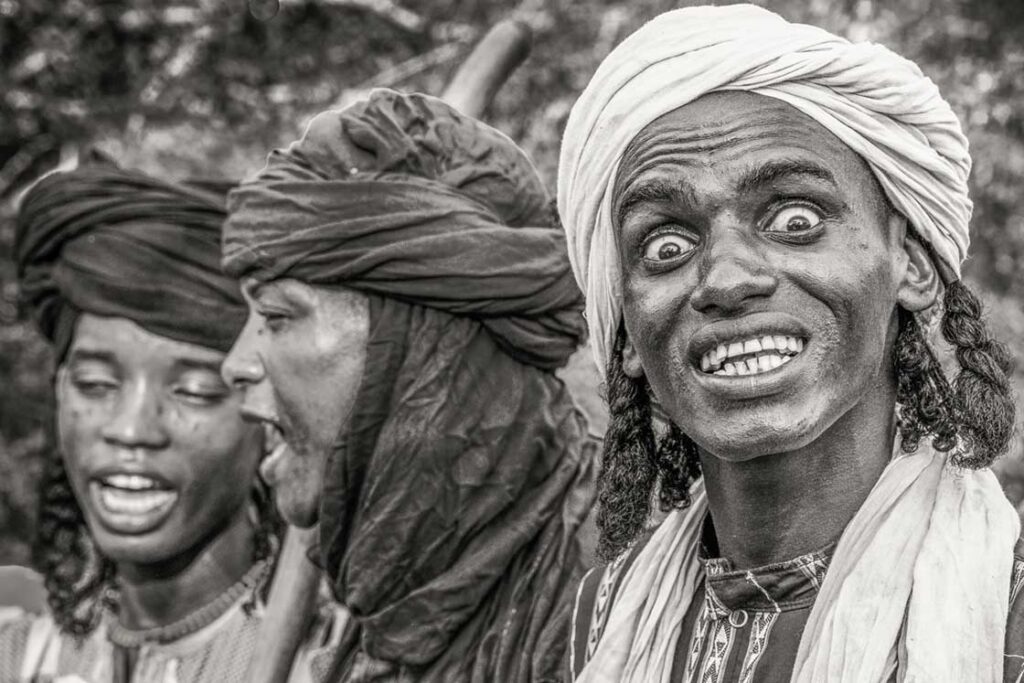
They are also in charge of setting up camp. Their main dwellings are table-like structures, called “wuros”, that can be dismantled and reassembled quickly. It basically consists of a few wooden poles and two shelves. On the top shelf, the precious calabash gourds are displayed. Many of them have been beautifully carved and decorated. These are a source of great pride for the woman of the house.
The second shelf is used to keep things that would be damaged if on the ground, including babies who use it as a place to sleep.
Women and girls are responsible for feeding the family, so they milk the cows, the milk being their main source of food. Butter and a form of yogurt are made from the fresh milk by shaking a calabash for hours. They are also responsible for getting water to the camp. So, every day, they get set up with a donkey and a collection of yellow containers to fetch the water they need.
Children help with all the chores and start doing it at a very early age. Young girls help the women taking care of younger children (which there are plenty of), and young boys cannot wait to be able to help herd the cattle. Boys typically begin doing this job at age seven and are very proud when they have reached that stage.

But back to the Gerewol festival, which goes on for seven days. The “official dance” is a form of line dancing with men swaying and singing a rather strange (to me), repetitive, almost hypnotic song while moving their eyes and teeth. The dancers look stunning.
Each clan has its own particular style. Some have their faces painted in deep hues, while others decorate theirs with white dots’ patterns and wear ostrich feathers on their heads. The dancing goes on ALL NIGHT, that is, until dawn, every day of the festival.
Three young women serve as designated judges. These are women who are eligible for marriage pick their favorite among the line-up of dancers. The women mostly pick on aesthetic criteria. The Wodaabe’s criteria for judging beauty are well-defined: a handsome man has very white teeth, and the white portion of the eyes, an elongated narrow nose, and is tall.
All of the make-up and costumes are designed to enhance the appearance of these dimensions. Dark lipstick and eye make-up are applied to increase the apparent whiteness of the eyes and teeth; feathers make them look taller, and a line on the nose is used to make it look finer.
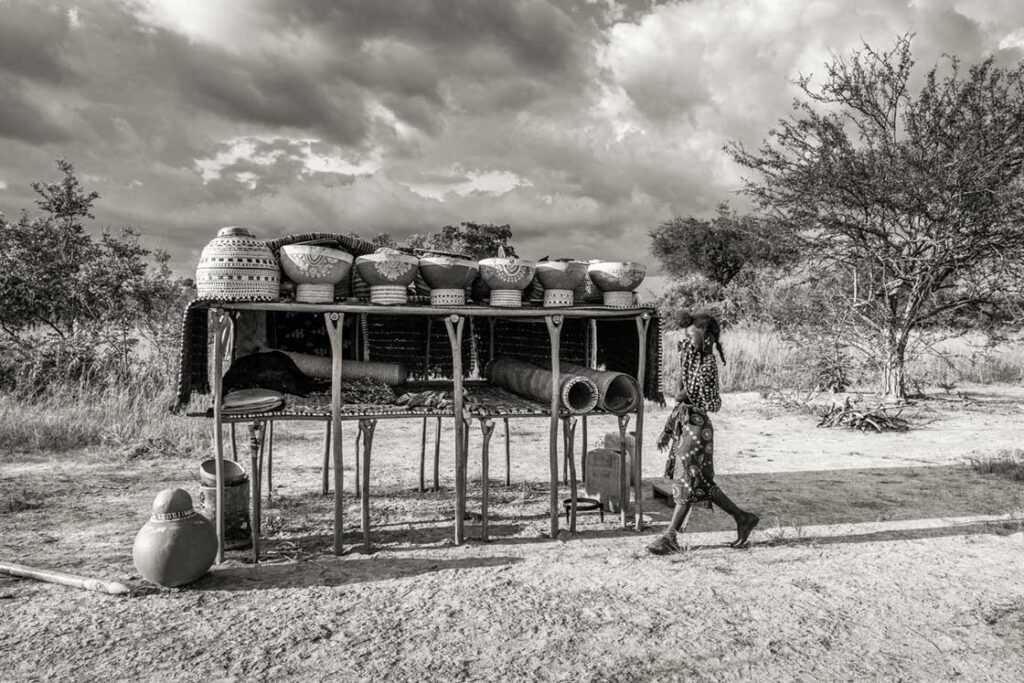
The dance moves also highlight the eyes and teeth. What happens next is a matter of dispute.
Is the chosen young man simply one of the beauty contest winners, or is he a spouse to be for this young woman? Some have claimed that this is how spouses are selected, but others claim that there is more to spouse selection than winning the dance. But what everybody agrees upon is that winning the contest is a huge honor and that the dance is an opportunity for women, not just the three official “judges”, to pick a potential mate, perhaps for just a night, or for life.

France Leclerc
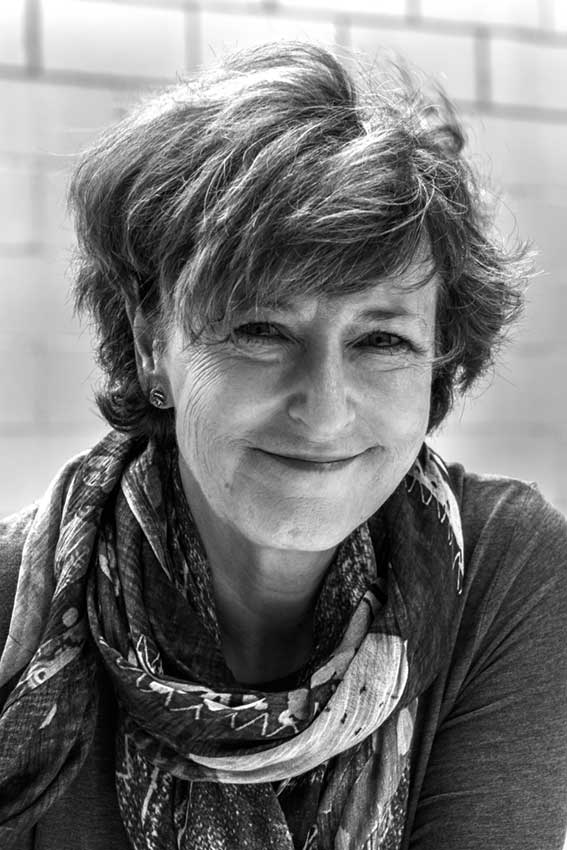
“I see a world growing ever more insular and inward-looking. Borders are closing, and anger is directed at immigrants, especially those who do not look like whoever is declared to be the deserving “locals.” Even people who travel internationally tend to see sanitized versions of the countries they visit, with little interaction with citizens in their native habitat. This induces people to create a shallow and often false impression.
For many years I have been traveling and documenting a wide variety of ethnic groups, often in out-of-the-way places worldwide, photographing people with strong ties to their distinctive cultures. My aim in doing so is to illustrate that despite the vast diversity we see in people worldwide, in appearance, traditions, and norms, we nevertheless observe the strong common core values most of us share.
To capture these glimpses of people’s lives, I photograph subjects in their daily environment. Most of my images are candid photos trying to capture a real moment, an interaction between family members or neighbors, a day-to-day responsibility, or a religious ritual. My focus is on showing the world as it is, not as it was or as we would like it to be. By doing so, I hope to open our eyes to a richness that only a larger view of the world can deliver, now more than ever.”
